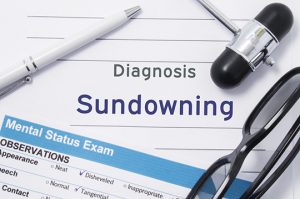
More On the 6 Components of the Ongoing Case Study
A Deep Dive into the Six Components of the NCLEX-NGN Ongoing Case Studies
Need help understanding the six components of the Ongoing Case Studies that are part of NCLEX-NGN? We’re here to walk you through each of them so you can feel confident when you sit for your examination.
The Ongoing Case Studies are designed to simulate an actual case that you might encounter in a clinical setting. Rather than simply test the knowledge that you acquired in nursing school—which is also important—the case study progresses from your first interaction with a client through your evaluation of the outcomes.
We told you about the reasoning behind NCLEX-NGN and the implementation of the Clinical Judgment Measurement Model. And we provided a brief description of the six components that you’ll be asked to analyze, using your cognitive skills—not just the “perfect world” situations that textbooks provide.
- 1
Recognize cues
The nurse reviews all client findings and determines which data are relevant and important, focusing on cues (findings or assessments) that are of IMMEDIATE CONCERN.
You consider every bit of information in the initial scenario, including things like medical-social history, mental status, developmental stage, diagnosis, and current symptoms. No two clients are the same, so what is abnormal for one client may be acceptable for another. For example, an O2 saturation of 90% means hypoxia for most people but is in the normal range for a client with COPD.
The question: What matters most?
Tips for Recognizing Cues:
- This is only the first step—do not interpret or analyze yet. Don’t try to figure out what the findings could mean or what you, as the nurse, will do. Simply sort through all the data and look for items that are normal/usual, abnormal but expected (not relevant), or abnormal but unexpected (relevant).
- When you decide that a finding is abnormal or unexpected, look at the client and the scenario. If it’s expected (as with the O2 saturation of 90% for a client with COPD) then it’s probably not relevant.
- After going through all the data and determining what is relevant, decide which:
- Are MOST important
- Of IMMEDIATE concern
- REQUIRE follow-up.
- Even if a client finding is relevant, it may not be a priority. Example: A client presents to the ED with crushing chest pain; the client also has diabetes. Diabetes is an abnormal finding, so it’s relevant, but NOT the priority in this scenario.
- 2
Analyze Cues
With relevant cues sorted out, now the nurse can begin to interpret what the cues can mean. By analyzing the factors in the clinical scenario, you can start to fit them into the case. Now you will think about what is happening and possible complications for the client.
Now you analyze the cues that you have recognized; this will be the basis for the rest of the Ongoing Case Study as you begin to plan and prioritize the client’s needs and how you will meet them. To do this, you’ll require knowledge of health conditions and how they relate to the client’s current situation. You will also have to know about diagnostic tests and what the results can indicate.
The question: What does it mean?
Tips for Analyzing Cues:
- Go back to the relevant cues you found in Recognize Cues.
- Link the cues to possible client conditions that match with your findings and cues.
- All client findings are important but concentrate on those that are not normal or not expected. These are the findings to analyze.
- Determine if the findings tell what is happening to the client: Do they support or oppose any conditions?
- Decide if you need more information to make an accurate analysis or understand the clinical situation.
- 3
Prioritize Hypotheses
Now the nurse is ready to make predictions (hypotheses) in order to prioritize client needs. You’ve looked at all the data and considered all the possibilities for what the client is experiencing. It’s time to rank the hypotheses according to their urgency, as well as the risks that the client faces.
You look for all explanations and decide which ones are most likely, as well as those that are least likely. As you prioritize, you will use your cognitive skills to decide which problems or issues require IMMEDIATE attention and which ones can be postponed for the moment.
The question: Where do I start?
Tips for Prioritizing Hypotheses:
- This is the time to use your nursing education knowledge! You already have the information you need to think critically and prioritize.
- Prioritizing includes considering all factors, not just the client’s condition. Your plan will change depending on where it occurs (A physician’s office is different from an Emergency Department, which is different from an outpatient facility), as well as what resources are available. (Is your unit fully staffed? Do you have services such as Radiology and Respiratory Therapy? Are the client’s Medical Records available?)
- Look at your own level of knowledge and skills. A nurse with 5, 10, or 20 years of experience can handle more complex situations than a new graduate. Consider your expertise in performing tasks. You can’t plan for something you don’t yet know how to do.
- Use the Priority Classification System to rank the hypotheses:
- High/Top Priority: Life-threatening or can result in harm to the client
- Intermediate/Middle: Not an emergency/not life-threatening, but important. It may be serious but can wait while High Priorities are met.
- Low/Last Priority: Not directly related to the client’s current situation, is not urgent and can wait until High and Intermediate needs are met.
- ABCs: Always, always include Airway, Breathing, and Circulation in your prioritization. The exception: Cardiopulmonary resuscitation uses CAB: Circulation (compressions), Airway, and Breathing.
- Focus on the information you’re provided in the scenario. Everything you need to answer the test item is included. Don’t wish you had more data.
- 4
Generate Solutions
It’s time for the nurse to generate the plan of care and identify appropriate interventions that will lead to positive client outcomes. You’re now using your nursing knowledge and evidence-based practice to generate solutions based on the priorities you’ve established.
As you provide care for your clients, look at the plan of care that was created from the hypotheses and compare it to the client’s status. Determine if the interventions are still appropriate or if they need to be revised. Ask yourself if they will achieve the best outcomes for the client.
Question: What can I do?
Tips for Generating Solutions:
- Identify the expected outcomes and determine if the established priorities will achieve those outcomes.
- Be prepared to see test items that ask about interventions based on your assessments, and any interventions that are nursing actions.
- Consider actions that are indications or contraindications.
- Think about the case study scenario and what potential risks and complications for the client.
- Identify contributing factors such as medications, sleep, infection, hydration, surroundings, and ability to communicate.
- 5
Take Action
Taking action means performing appropriate activities that benefit the client and lead to desired outcomes. Actions can include things like maintaining stability, improving a situation, preventing a complication, or recognizing and managing an emergency.
Choosing a nursing action is the equivalent of implementing nursing care. You’re meeting the client’s needs based on the priorities that you’ve established. You’re also demonstrating that you know what actions to take in the situation to keep the client safe and comfortable.
Question: What will I do?
Tips for Taking Action:
- Expect to see many test items on nursing actions. Questions may be about nursing interventions or performing nursing skills.
- Pay attention to the information provided in the scenario. Every test item has everything you need to determine the correct (key) response.
- Always focus on the needs of your clients and what actions you will take to meet those needs.
- Before taking an action, pause to consider the scenario: What is happening with a client and what the priorities of care are.
- Decide if an action is appropriate and relevant for the client, based on their medical condition and the clinical setting.
- 6
Evaluate Outcomes
The nurse is constantly evaluating outcomes and modifying care to meet those goals. The nurse also communicates to the health care team, the client, and the client’s family regarding the plan of care.
Based on the evaluations, the nurse can continue the current plan of care or make revisions if it’s not effective or the goals have only been partially met. A plan of care doesn’t always proceed in a linear fashion and can require multiple adjustments to reach the desired outcomes.
Question: Did it help?
Tips for Evaluating Outcomes:
- Focus on the expected outcomes and think if they were met or not. If not, try to decide what needs to be done in order to meet them.
- If outcomes were not met, or partially met, return to the first five steps and see if something was forgotten or misidentified. Examine if the expected outcomes were consistent with earlier assessments findings.
- You can be asked about specific findings, such as lab values, vital signs, or body systems. Remember that normal findings may not be relevant to the case study scenario.
- Look at client education to see if the client has understood your teaching or if more education is needed. If there is a lack of understanding, further follow-up is indicated.
Once you’re able to understand how the Unfolding Case Study progresses from noticing cues about the client’s situation, all the way to evaluating the interventions, the process will become familiar. The steps are logical and align with your knowledge from nursing school. Don’t be intimidated by the case studies. Practice taking them so you’re confident when you sit for your NCLEX.
Find out your chances by taking one of our practice tests.
Take a free test Reviewed by
Reviewed by 

